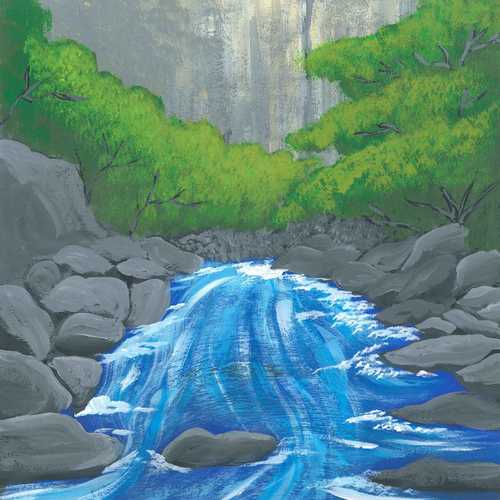
Awa Khadd Himalayan Stream

Unprecedented and chaotically distributed rainfall in the monsoon of 2023 led to devastating floods in the Himalayan regions, including the Kangra Valley, and adjoining plains of Punjab. River Beas, in and around the town of Mandi, was one of the worst affected due to these floods. The overflowing water from the Himalayan Ranges caused flooding in the other adjoining states of North India as well. Apart from Geological features, Forest patches, and Riverbeds, human-made structures like irrigation canals were also affected due to the sudden, and unregulated surge in the flow of water coming downstream from Himachal Pradesh.
A major cause of the flooding like this, happening year by year, is now being linked to the changes in the Settlement Geography of the inner Himalayas, where the water wreaking havoc in these floods, just exists as Rivulets. As peacefully flowing Khadds. Like the Awa Khadd, you are listening to.
Awa Khadd Rises from the Dhauladhar Ranges in Kangra Valley, and flows downstream to join river Beas, which ultimately drains into River Satluj in the state of Punjab. The Perennial nature of Awa, and similar Himalayan Khadds due to dual sources of water (both monsoon rains and glacier discharge) and an often violent flow due to the topographical contours, makes them suitable for the development of Hydropower projects. The Upper Awa Hydropower project is located on the Awa Khadd. This recording of Awa was done near a village called Kulani, close to the Kulani Hydropower Plant.
Khadd is the local name for a Rivulet in the Himalayan state of Himachal Pradesh in India. These Khadds, rising from various Mountain Ranges, flow as streams of varying magnitudes, contributing to the larger River Ecosystems in the region. They provide drinking water, as well as water for irrigation purposes to the rural and semi-urban settlements on their way to the cities, where the role is further amplified. More importantly, this complex network of Rivulets regulates the natural flow of water in the mountainous terrain of the Himalayas and maintains the ecological balance for the wider Flora and Fauna; an aspect of Himalayan River Ecosystems being urgently looked into, as the Eco-sensitive region has rapidly started facing adverse effects of Climate Change in the recent past.
Recording by
Mustard Lake in Himachal Pradesh, India
Earth.fm is a completely free streaming service of 1000+ nature sounds from around the world, offering natural soundscapes and guided meditations for people who wish to listen to nature, relax, and become more connected. Launched in 2022, Earth.fm is a non-profit and a 1% for the Planet Environmental Partner.
Check out our recordings of nature ambience from sound recordists and artists spanning the globe, our thematic playlists of immersive soundscapes and our Wind Is the Original Radio podcast.
You can join the Earth.fm family by signing up for our newsletter of weekly inspiration for your precious ears, or become a member to enjoy the extra Earth.fm features and goodies and support us on our mission.
Subscription fees contribute to growing our library of authentic nature sounds, research into topics like noise pollution and the connection between nature and mental wellbeing, as well as funding grants that support emerging nature sound recordists from underprivileged communities.
